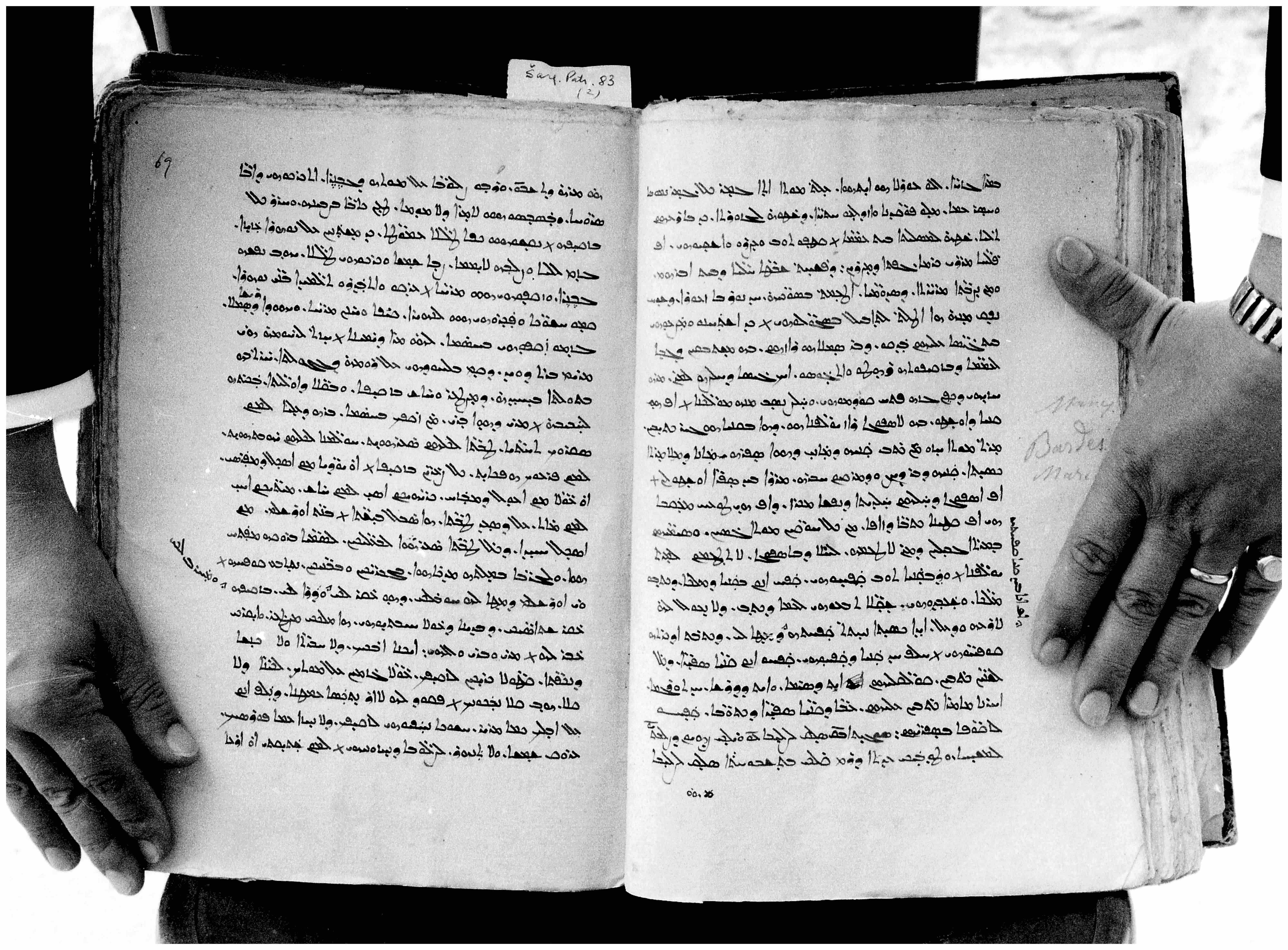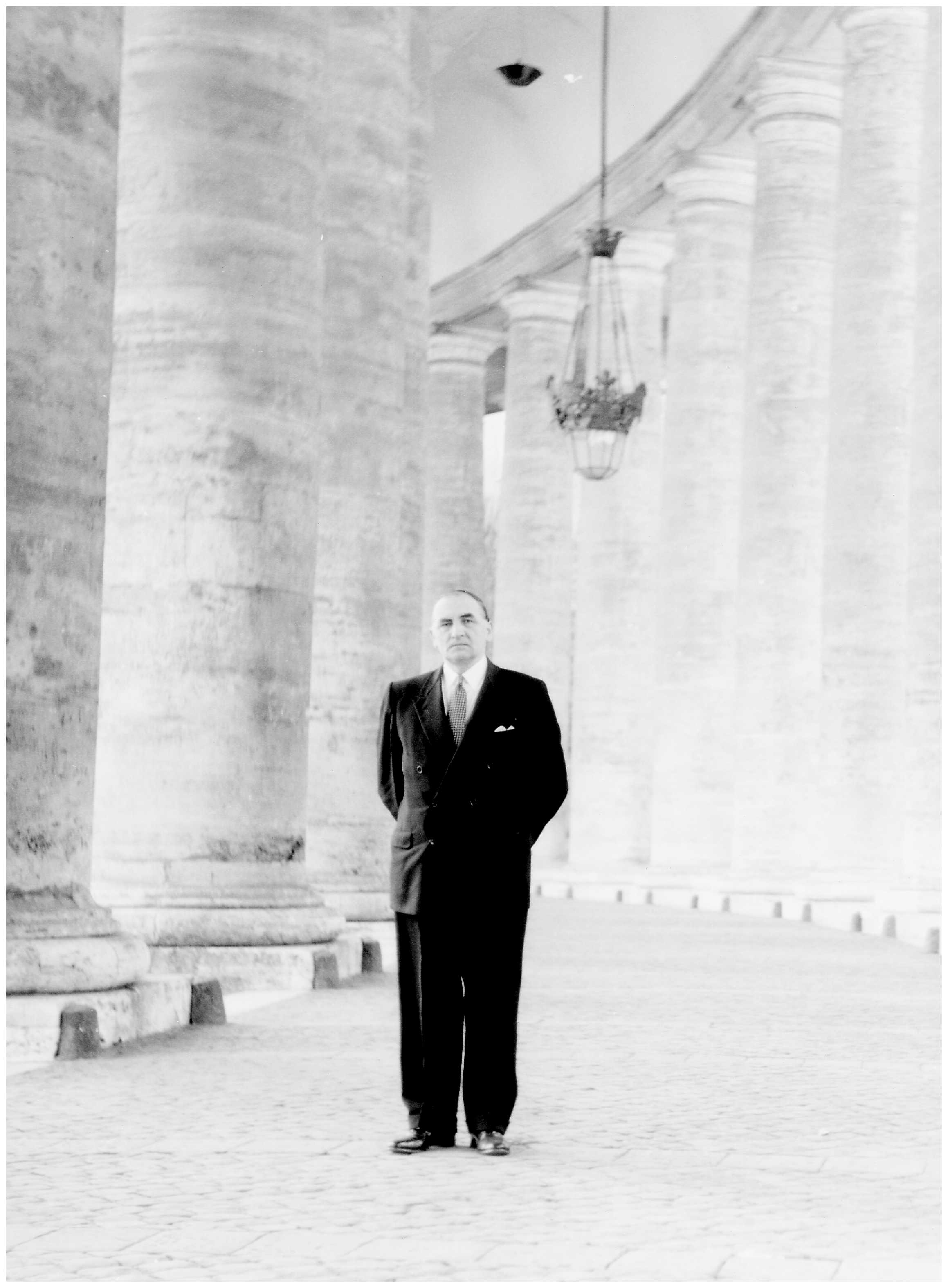Vööbus Syriac Manuscript Collection
Vööbus Syriac Manuscript Collection
Voobus Syriac Manuscript Collection
-
Countries
Egypt, India, Iraq, Jerusalem, Lebanon, Syria, Turkey, and more -
Date Range
7th-20th centuries -
Number
60,000+ images currently scanned, most of which show two pages -
Languages
Syriac -
Curator
Dr. Josh Mugler, Curator of Eastern Christian & Islamic Manuscripts
"How did I conceive the idea to become engaged in exploration work in search for unknown manuscripts in the Orient? I had no interest in adventures as such, much less in travelling; but all was prompted by my various extensive research projects, which compelled me to search for new pathways and open up new plateaus. Thus, against the assurances that in the field of Syriac literature, all the records are in the great libraries in Rome, London, Paris and Berlin, I left the axiom for others and wanted to look myself into the actual situation." – Arthur Vööbus, "On the Pathways of the Syrian Orient in Pursuit of Manuscript Treasures" (1982), 5.
Catalog and Image Access
The Vööbus Syriac Manuscript Collection of partially-filmed manuscripts remains a work in progress. The database (below) holds current knowledge about the collection and is updated periodically as new information becomes available. Digitization of the collection is ongoing; images are made available on the Vööbus Syriac Manuscript Collection site. In some cases, HMML photographed the same manuscripts as Vööbus, decades later; these HMML images are made available in HMML Reading Room.
NOTE: Among the collection are items that are listed as "Photographs" (non-manuscript photos or film), "Miscellaneous" (a general collection of objects), and "Unknown" (items which the location is unknown).
NOTE: Scholars wishing to order a scan of these fragments can do so using the Manuscript Image Order Form.
NOTE: Images that Vööbus purchased are not available online and cannot be ordered as a scan. Purchased images may only be consulted on-site at HMML.
Current Catalog:

During his career, Dr. Arthur Vööbus (1909–1988), scholar, researcher, and Lutheran minister, made more than 40 separate trips to the Middle East, visiting such places as St. Mark's Monastery in Jerusalem; the Monastery of Sharfeh near Harissa in Lebanon; the Syrian Orthodox Patriarchate of Damascus; the Chaldean Patriarchate in Baghdad; the monastery of Mar Mattai near Mosul; and the Church of the Forty Martyrs in Mardin, Turkey (HMML later digitized manuscripts at some of these sites). During these travels, he amassed a collection of manuscript photographs on film, larger than any other collection of Syriac manuscript images before the advent of digital imaging. The dates of most of these trips, and the precise span of time they represent, are imperfectly documented. However, Vööbus placed special importance on his serendipitous encounter with Archbishop Philoxenus Yuhanon Dolabani at the Church of the Forty Martyrs in June 1964. With more than 25,000 images, the collection is enormous, considering the technology and the circumstances of the photography, and is aligned with HMML’s goal of highlighting manuscript collections that remained in their countries of origin after the museum sweeps of the modern age.
Collection History
- 1979 The collection moves from Vööbus’ home to the newly founded Institute of Syriac Manuscript Studies, located in the JKM Library at the Lutheran School of Theology at Chicago (LSTC).
- 2005 LSTC enters into a contract with the Oriental Institute at the University of Chicago to digitize the Vööbus films and retain rights to publish their contents, while LSTC retains ownership of the films and the images derived from them. Between 2005 and 2016, the Oriental Institute project, headed by Stuart Creason, digitizes about one-tenth of the collection and produces cataloging metadata for many of the manuscripts.
- 2016 Due to financial constraints, the LSTC enters into a new agreement with HMML and the entire collection is transferred and stored in HMML's microfilm vault. HMML undertakes responsibility for the continued digitization of the films and the hosting of the images. Stuart Creason subsequently transfers to HMML the digital images and metadata produced by the Oriental Institute.
- 2018 HMML's scanning of the films begins and is ongoing.
- 2023 HMML launches the online portal for viewing the Vööbus collection.
About Arthur Vööbus

A native of Vara, Estonia, Arthur Vööbus received a classical education and went on to study theology at the University of Tartu. Despite being forced to flee to Germany in 1940, he returned to Estonia to obtain his PhD at the University of Tartu in 1943, where he later became an assistant professor. Forced to flee a second time to Germany in 1944, he eventually obtained a post as associate professor of Ancient Church History at the Baltic University near Hamburg, Germany (1946–1948). Vööbus immigrated to the United States in 1948 and became chair of New Testament and Early Church History at the Lutheran Seminary in Chicago (now Lutheran School of Theology at Chicago). He retained this post for the remainder of his career, until his retirement in 1977. A prolific author with more than 300 publications, his areas of research included early Syriac Bible versions, the Bible commentaries of Dionysios bar Salibi, the West Syriac synodicon, the history of educational institutions (especially the school of Nisibis), the homilies of Jacob of Serugh, and the works of Moshe bar Kepha. Vööbus was a pioneer of Syriac manuscript studies who dedicated much of his life to exploring and documenting manuscript collections in the Middle East, which were largely unknown at that time.
